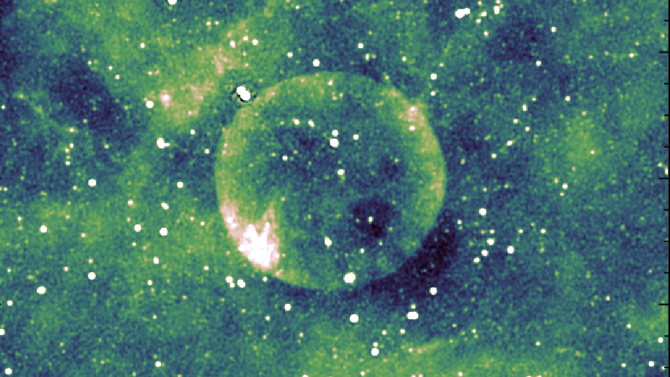U.S. Government's Spy Cameras Watch Americans from Space
WASHINGTON (AP) -- A little-known spy agency that analyzes imagery taken from the skies has been spending significantly more time watching U.S. soil.
In an era when other intelligence agencies try to hide those operations, the director of the National Geospatial-Intelligence Agency, retired Air Force Lt. Gen. James Clapper, is proud of that domestic mission.
He said the work the agency did after hurricanes Rita and Katrina was the best he had seen an intelligence agency do in his 42 years in the spy business.
"This was kind of a direct payback to the taxpayers for the investment made in this agency over the years, even though in its original design it was intended for foreign intelligence purposes," Clapper said in a Thursday interview with The Associated Press.
Geospatial intelligence is the science of combining imagery, such as satellite pictures, to physically depict features or activities happening anywhere on the planet. A part of the U.S. Defense Department, the NGA usually operates unnoticed to provide information on nuclear sites, terror camps, troop movements or natural disasters.
After last year's hurricanes, the agency had an unusually public face. It set up mobile command centers that sprung out of the backs of Humvees and provided imagery for rescuers and hurricane victims who wanted to know the condition of their homes. Victims would provide their street address and the NGA would provide a satellite photo of their property. In one way or another, some 900 agency officials were involved.
Spy agencies historically avoided domestic operations out of concern for Pentagon regulations and Reagan-era executive order, known as 12333 that restricted intelligence collection on American citizens and companies. Its budget, like all intelligence agencies, is classified.
Get the Space.com Newsletter
Breaking space news, the latest updates on rocket launches, skywatching events and more!
On Clapper's watch of the last five years, his agency has found ways to expand its mission to help prepare security at Super Bowls and political conventions or deal with natural disasters, such as hurricanes and forest fires.
With help, the agency can also zoom in. Its officials cooperate with private groups, such as hotel security, to get access to footage of a lobby or ballroom. That video can then be linked with mapping and graphical data to help secure events or take action, if a hostage situation or other catastrophe happens.
Privacy advocates wonder how much the agency picks up--and stores. Many are increasingly skeptical of intelligence agencies with recent revelations about the Bush administration's surveillance on phone calls and e-mails.
Among the government's most closely guarded secrets, the quality of pictures NGA receives from classified satellites is believed to far exceed the one-meter resolution available commercially. That means they can take a satellite "snapshot" from high above the atmosphere that is crisply detailed down to a one-meter level.
Clapper says his agency only does big pictures, so concerns about using the NGA's foreign intelligence apparatus at home doesn't apply.
"We are not trying to examine an individual dwelling, for example, because what our mission is normally going to be is looking at large areas," he said. ''It doesn't really affect or threaten anyone's privacy or civil liberties when you are looking at a large collective area."
When asked what additional powers he would ask Congress for, he said, "I wouldn't."
His agency also handles its historic mission: regional threats, such as Iran and North Korea; terrorist hideouts; and tracking drug trade. "Everything and everybody has to be some place," he said.
He considers his brand of intelligence a "chess match". "There are sophisticated nation states that have a good understanding of our surveillance capabilities," including Iran, he said. "What we have to do is counter that'' by taking advantage of anomalies or sending spy planes and satellites over more frequently.
Adversaries who hide their most important facilities underground is a trend the agency has to work at, he said.
NGA was once a stepchild of the intelligence community. But Clapper said it has come into its own and become an equal partner with the other spy agencies, such as the CIA.
Experience-wise, the agency is among the youngest of the spy agencies. About 40 percent of the agency's analyst have been hired in the last five years.
"They are very inexperienced, and that's just fine. They don't have any baggage," said Clapper, who retires next month as the longest serving agency director. "The people that we are getting now are bright, computer literate. ... That is not something I lie awake and worry about."
Join our Space Forums to keep talking space on the latest missions, night sky and more! And if you have a news tip, correction or comment, let us know at: community@space.com.
